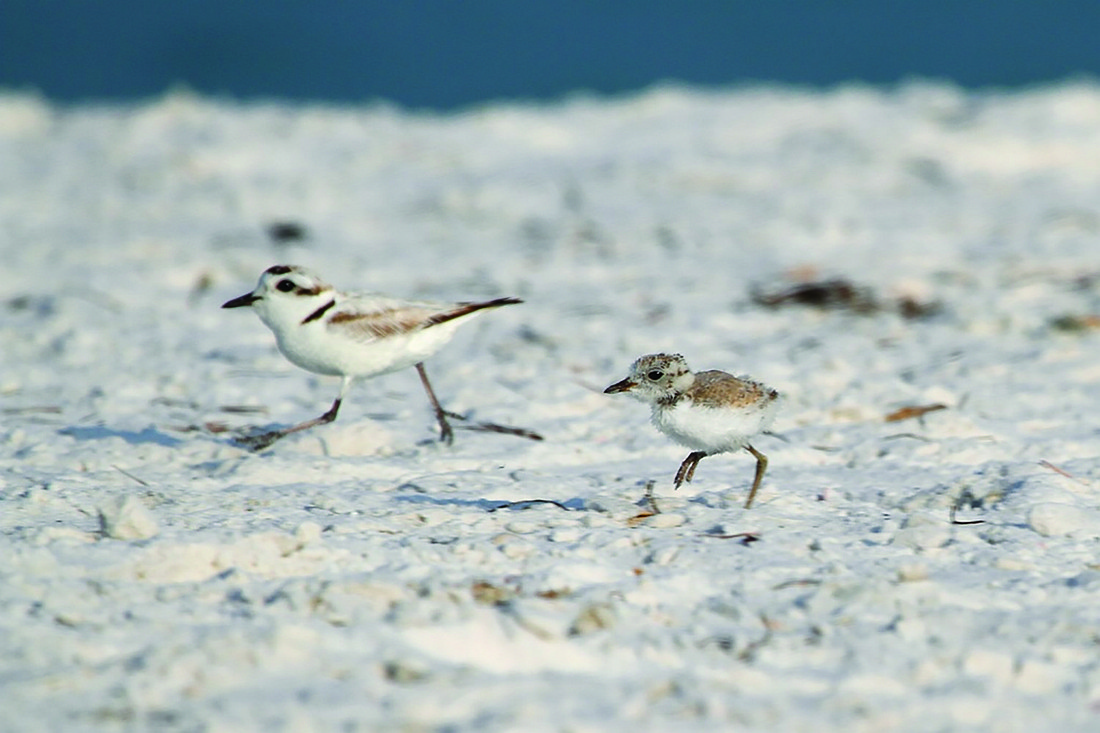- July 26, 2024
-
-
Loading

Loading

Starting this month, Siesta Beach will become the seasonal home for a different kind of snowbird — the snowy plover. The wading birds lay their eggs and raise their chicks (which are only the size of a human thumb one week after hatching) on Siesta Beach each year.
To give the embattled shorebird species a better chance of breeding and raising their young on Siesta Beach, the Sarasota Audubon Society is gearing up for another year of the Beach Nesting Bird Project, which was created in 2006.
March through August is nesting season for snowy plovers, which nest on beaches throughout the Caribbean, South America and the southern and western U.S.
Snowy plovers typically breed on sandy coasts and brackish inland lakes, but interference from humans and pets has made it increasingly difficult for the species to live on beaches across its natural habitat.
Although the snowy plover is indigenous to Florida, biologists estimate that only about 200 of the birds live in the state. And, according to the Sarasota Audubon Society, Siesta Beach is home to about 10% of the entire state’s breeding population of snowy plovers. Other beach nesting birds native to the area include the least tern, black skimmer, American oystercatcher and Wilson plover.
According to Bob Luckner, a Sarasota Audubon member and program director for the Beach Nesting Bird Project, six snowy plover hatchlings survived last year on Siesta Beach — the highest recorded number for Florida’s Sun Coast. He said it’s an indication that wildlife-protection efforts on Siesta Key, such as the Beach Nesting Bird Project, are paying dividends.
During an annual shorebird survey conducted in February, for example, Sarasota Audubon Society volunteers tallied 18 snowy plovers on Siesta Key Beach in the area between Access 11 and Access 5.
As part of the project, each year, from mid-February until late August, volunteers from Sarasota Audubon monitor and protect area beaches for nesting birds. Volunteers monitor shorebird nests and their hatchlings and serve as ambassadors for the Audubon Society.
The popularity of Siesta Beach among tourists, as well as holidays during nesting season such as the Fourth of July and Memorial Day, raises the risk of beachgoers inadvertently damaging shorebird nests and interfering with the feeding of hatchlings.
Sarasota Audubon advises that beachgoers keep a distance of 30 to 50 feet from buffered areas to allow the hatchlings unimpeded movement.
“It’s clear that the more beach stewards we have, the better the chance of success of our snowy plover chicks successfully fledging to adulthood,” said Jeanne Dubi, Sarasota Audubon president. “Our program trains 20 to 30 beach stewards each year to monitor nests and be ‘chick checkers.’”
The Audubon Society encourages beachgoers who observe a bird in distress to call Save Our Seabirds at (941) 388-3010.
If you go
Sarasota Audubon President Jeanne Dubi will lead an informational beach walk at 8 a.m. Saturday, March 15, at the Siesta Key public beach pavilion (north end). Audubon members Bob Luckner, program coordinator, and Allen Worms, biologist, will also be on hand to answer questions. Interested residents can learn more at sarasotaaudubon.org.
Ways to protect beach bird nesting areas
1. Keep a distance of 30 to 50 feet from nests (dunes and buffered areas).
2. Don’t chase the sea birds — especially when they’re feeding.
3. Look out for chicks — snowy plover chicks, which are only the size of a human thumb, run across the beach looking for food within a few hours of hatching.
Contact Nolan Peterson at [email protected]